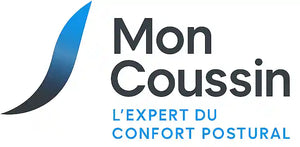Introduction: Understanding Uncodiscarthrosis and Foraminal Stenosis
Learn how many patients have regained their mobility without surgery thanks to innovative treatments. Uncodiscarthrosis and foraminal stenosis are common conditions that can cause severe pain and significantly reduce quality of life. In this article, you will learn how to identify, understand and treat these conditions with effective and proven approaches.
We will examine the causes and symptoms of these disorders, the diagnostic options available, medical and alternative treatments, as well as practical tips to improve your daily life. Reveal the secrets of effective management of uncodiscarthrosis and foraminal stenosis to regain a pain-free life.
Part 1: Causes and Symptoms of Uncodiscarthrosis Associated with Foraminal Narrowing
Causes and Risk Factors
What is Uncodiscarthrosis?
Uncodiscarthrosis is a form of degenerative osteoarthritis that primarily affects the uncocorporeal joints located in the neck (cervical spine). This disorder is often related to wear and tear of the intervertebral discs and surrounding bony structures. According to a study on cervical pathology, uncodiscarthrosis can lead to loss of flexibility and nerve compression, causing chronic pain【4:0†source】. Causes of uncodiscarthrosis include advanced age, genetic predisposition, and lifestyle habits.
Foraminal Stenosis: Understanding Nerve Compression
Foraminal stenosis occurs when the intervertebral foramina, where spinal nerves pass, become narrowed, causing nerve compression . Symptoms include neck pain , numbness, and weakness in the arms. Research on foraminal stenosis highlights the impact this condition has on the cervical spine, affecting patients' quality of life【4:0†source】.
Contributing Risk Factors
Risk factors for uncodiscarthrosis include age, genetic predisposition, and lifestyle. Repetitive activities and poor posture can also accelerate degeneration. Adopting preventive measures can significantly reduce these risks.
📌 To Remember:
- Uncodiscarthrosis : Degeneration of the cervical joints.
- Foraminal Stenosis : Narrowing of the foramens with nerve compression.
- Risk Factors : Age, genetics, lifestyle.
Part 2: Diagnostic Options for Uncodiscarthrosis
How to Diagnose Accurately
Clinical Examination and Medical History
The clinical diagnosis of uncodiscarthrosis begins with a thorough review of the patient's medical history and symptoms. The history is crucial to identify potential triggers. Physical examination techniques aim to assess pain, range of motion, and neurological reflexes.
Medical Imaging: MRI and X-ray
Cervical MRI imaging is essential to visualize the internal structures of the spine and assess the extent of degeneration. Compared with traditional X-ray, MRI provides a more detailed view【4:0†source】.
Other Advanced Diagnostic Tests
Advanced diagnostic tests , such as electromyograms (EMGs) and diagnostic test injections, can help assess nerve function and precisely locate the source of pain.
📌 To Remember:
- Clinical Diagnosis : Essential for an accurate diagnosis.
- Cervical MRI : Provides a detailed view of cervical structures.
- Advanced Tests : Assess nerve function.
Part 3: Effective Medical Treatments
Validated Therapeutic Approaches
Drug Treatments
Drug treatments for uncodiscarthrosis include anti-inflammatory drugs, pain relievers, and muscle relaxants. These medications help manage pain and inflammation, although side effects may occur【4:0†source】.
Physiotherapy and Cervical Exercises
Neck physiotherapy offers exercises specifically designed to improve flexibility and reduce pain. Professional supervision is crucial to achieve optimal results and avoid injury.
Minimally Invasive Interventions
Minimally invasive cervical interventions , such as corticosteroid injections and nerve blocks, offer temporary pain relief. Success stories and case studies demonstrate their effectiveness in the management of uncodiscarthrosis.
📌 To Remember:
- Medications : Manage pain and inflammation.
- Physiotherapy : Improves cervical flexibility.
- Minimally Invasive Interventions : Effective temporary relief.
Part 4: Alternative and Complementary Therapies
Integrative Approaches for Lasting Relief
Acupuncture and Traditional Chinese Medicine
Uncodiscarthrosis acupuncture is based on ancestral techniques to relieve pain and improve well-being. Studies and meta-analyses confirm its effectiveness in the treatment of uncodiscarthrosis【4:0†source】.
Therapeutic Yoga and Stress Management
Cervical therapeutic yoga helps reduce stress and improve flexibility. Personalized programs and studies on stress management demonstrate significant improvements.
Supplementation and Nutrition
Anti-inflammatory supplements , such as omega-3s and curcumin, play a role in reducing pain【4:0†source】.
📌 To Remember:
- Acupuncture : Proven effectiveness in pain relief.
- Therapeutic Yoga : Reduces stress and improves flexibility.
- Supplements : Help reduce inflammation.
Part 5: Tips to Improve Your Quality of Life
Adopting New Habits
Posture and Daily Ergonomics
Adopting good daily posture is crucial to prevent the worsening of uncodiscarthrosis. Tips to maintain better posture improvement include the use of ergonomic supports and frequent reminders to correct your posture.
Importance of Regular Physical Activity
Physical activity for uncodiscarthrosis should be adapted and regular to maintain mobility and reduce pain. Walking, swimming, and cycling are excellent options【4:0†source】.
Relaxation and Mental Well-being Techniques
Neck pain relaxation techniques, such as meditation and mindfulness, have been shown to be effective in reducing the perception of pain【4:0†source】.
📌 To Remember:
- Posture : Crucial to prevent worsening.
- Physical Activity : Maintains mobility and reduces pain.
- Relaxation : Reduces the perception of pain.
Conclusion: Your Complete Guide to Managing Uncodiscarthrosis
In summary, understanding the causes , making an early diagnosis , and following effective treatments are essential to managing uncodiscarthrosis. Adopting new habits can improve your quality of life. Early intervention and ongoing management are crucial. Consult a specialist for a personalized assessment and start your journey to a pain-free life.
FAQ
-
What is uncodiscarthrosis and how does it affect the spine?
- Uncodiscarthrosis is a degeneration of the cervical joints causing pain and stiffness.
-
What symptoms indicate foraminal narrowing?
- Numbness, neck pain, and muscle weakness are common signs.
-
Why is early diagnosis essential in these conditions?
- It helps prevent worsening and improve therapeutic results.
-
What non-surgical treatments are most effective?
- Physical therapy, medications, and acupuncture are effective for symptom management.
-
How can exercise help relieve neck pain?
- It improves flexibility and strengthens supporting muscles, reducing pain.
-
Can natural remedies be effective for uncodiscarthrosis?
- Yes, natural anti-inflammatories like omega-3s can help reduce inflammation.
For more information on spinal health and other wellness tips, explore our related articles here .





